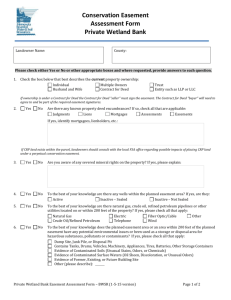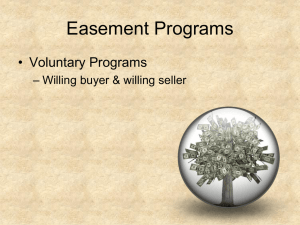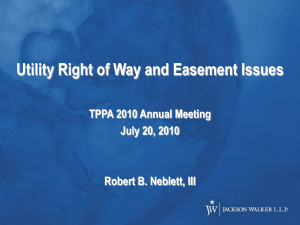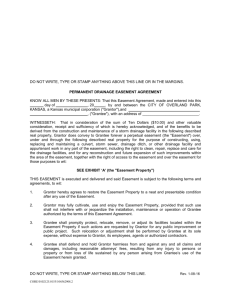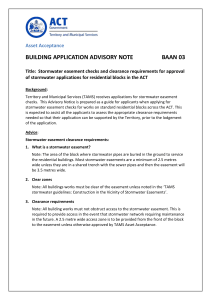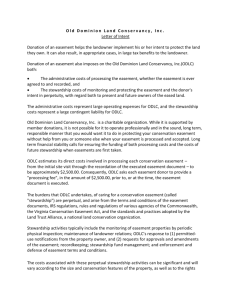Questions and Answers
advertisement
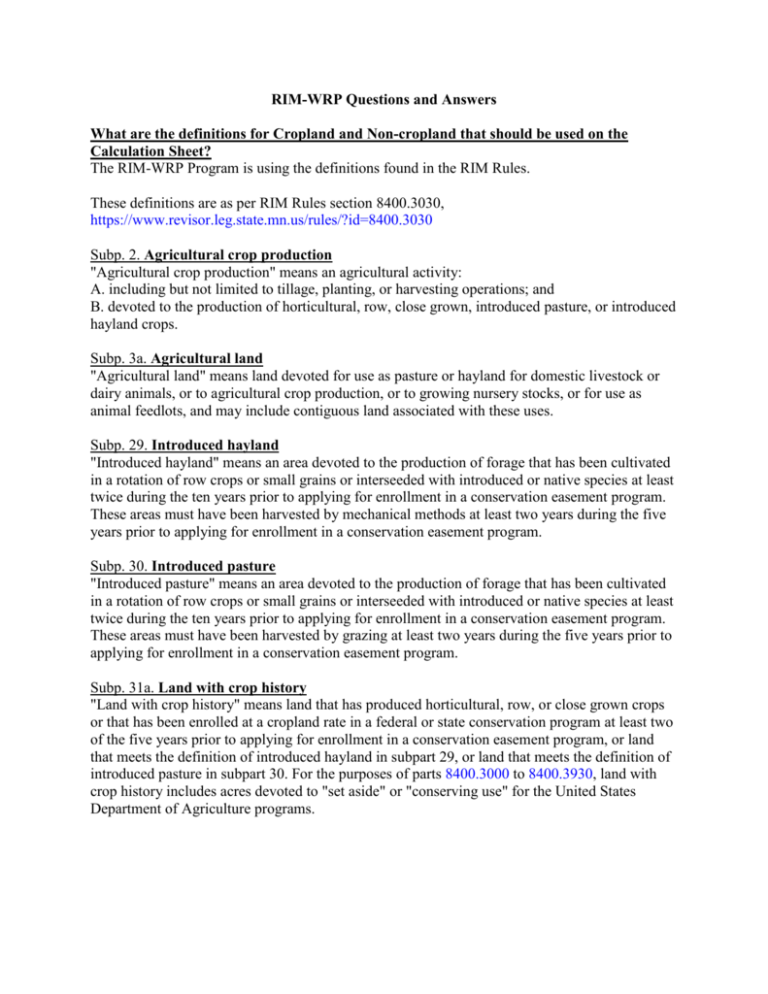
RIM-WRP Questions and Answers What are the definitions for Cropland and Non-cropland that should be used on the Calculation Sheet? The RIM-WRP Program is using the definitions found in the RIM Rules. These definitions are as per RIM Rules section 8400.3030, https://www.revisor.leg.state.mn.us/rules/?id=8400.3030 Subp. 2. Agricultural crop production "Agricultural crop production" means an agricultural activity: A. including but not limited to tillage, planting, or harvesting operations; and B. devoted to the production of horticultural, row, close grown, introduced pasture, or introduced hayland crops. Subp. 3a. Agricultural land "Agricultural land" means land devoted for use as pasture or hayland for domestic livestock or dairy animals, or to agricultural crop production, or to growing nursery stocks, or for use as animal feedlots, and may include contiguous land associated with these uses. Subp. 29. Introduced hayland "Introduced hayland" means an area devoted to the production of forage that has been cultivated in a rotation of row crops or small grains or interseeded with introduced or native species at least twice during the ten years prior to applying for enrollment in a conservation easement program. These areas must have been harvested by mechanical methods at least two years during the five years prior to applying for enrollment in a conservation easement program. Subp. 30. Introduced pasture "Introduced pasture" means an area devoted to the production of forage that has been cultivated in a rotation of row crops or small grains or interseeded with introduced or native species at least twice during the ten years prior to applying for enrollment in a conservation easement program. These areas must have been harvested by grazing at least two years during the five years prior to applying for enrollment in a conservation easement program. Subp. 31a. Land with crop history "Land with crop history" means land that has produced horticultural, row, or close grown crops or that has been enrolled at a cropland rate in a federal or state conservation program at least two of the five years prior to applying for enrollment in a conservation easement program, or land that meets the definition of introduced hayland in subpart 29, or land that meets the definition of introduced pasture in subpart 30. For the purposes of parts 8400.3000 to 8400.3930, land with crop history includes acres devoted to "set aside" or "conserving use" for the United States Department of Agriculture programs. Is CRP eligible for RIM-WRP ? Existing non-tree establishment CRP land is eligible for RIM-WRP. WRP is not allowed to enroll CRP that was established to trees; therefore it is not eligible for the RIM-WRP partnership. Is CRP considered cropland or non-crop? Use the cropland rates on the Calculation Sheet for CRP land. Is land currently enrolled in expiring 20 year RIM Easement eligible? Yes, this land would be eligible and it would be considered cropland for the Calculation Sheet. Will BWSR and NRCS pay for the restoration and management of donated land? Under certain circumstances donated acres are eligible for restoration payments as long as those acres meet the partnership’s objectives. What land use, cropland or non-cropland should be used on the Calculation Sheet for wetlands previously restored under another state or federal program as well as those that may be covered by an existing USFWS “No Fill, Drain, Burn” easement? Wetlands Previously Restored – use the land use that was in place prior to the restoration. For example if the prior land use was cropland and then restored under CRP, use the cropland rate. No Fill, Drain or Burn Easements - These generally restrict the use of the land below a certain elevation, but allow other uses, such as cropping as long as no additional filling, draining or burning occurs. In these situations use the current existing land use of either cropland or noncropland to determine payment. Is the upland and wetland definition for eligibility the same as the definition of cropland and noncropland? NO!!! See the cropland and non-cropland definition above. The definition of wetland and upland is found in the eligibility documents previously sent to all offices. The maximum upland to wetland ratio is 8:1, what is the minimum? There is no minimum acreage stipulated for the RIM-WRP Partnership. If an applicant only wants to offer the wetland and wants to farm right up to the edge we generally would not allow this to occur, We would want the applicant to offer sufficient upland to provide a buffer for wildlife, water quality, erosion, etc. that would ensure the stability and health of the wetland. There is no set minimum but instead we would rely on the NRCS FOTG standards, the site specifics and local judgment to propose a minimum buffer. Generally, it is recommended that at least a 100 foot buffer be included around wetland areas when feasible and practical to consider. For applications where the non-cropland acres exceed 20% can the excess acres be donated? Yes. See the specific guidance in the General Eligibility Guidance. Occasionally, it will be desired to include under easement certain lands that will not provide a benefit to the functions and values of the restored wetlands or that are ineligible for easement compensation. In certain situations, these areas can be enrolled as donated acres, or land that is included in the easement without compensation. The enrollment of donated areas will be allowed primarily to simplify the definition and maintenance of easement boundaries as they relate to property ownership. Note that donated acres that are enrolled should not be considered as “adjacent lands” with respect to the maximum 8:1 enrollment criteria or the 20 percent limit on “other lands”. In other words, an application could exceed either of these criteria if the amount exceeded is enrolled as eligible donated acres. Can Federal candidate species be considered in Section III-A? Yes. Federal species to be considered in Section III-A include; Endangered, Threatened and Candidate species, including designated critical habitat (Topeka shiner). Section I-C – “Water Quality Benefits of the Easement – predominant soil in the easement is HEL/PHEL”. Do we use the same guidelines as determining HEL fields for Conservation Compliance (i.e. 1/3 or more of the field)? No. For purposes of RIM-WRP scoring, the determination is based on the entire easement area offered rather than a field basis. Points are awarded if >50% of the offered acres are HEL/PHEL. If an application is selected for funding in RIM-WRP is the landowner allowed to farm the land the next year? The landowner may continue cropping the land until the easement closes and then the following conditions apply if approved through a NRCS compatible use agreement: a. An easement closes before October 1st of the current year; any crop planted that year may be harvested, but crops will not be allowed to be planted the following year. b. An easement closes after October 1st of the current year; any crop planted that year may be harvested, and a crop will be allowed to be planted and harvested the following year. For any other specific situations or requests contact the State WRP Program Manager for approval. How are group projects handled? Group projects that require more than one applicant (easement) to adequately restore a wetland or group of wetlands should meet eligibility requirements as a group and not individually. For example, if the applicant is a part of a joint project with 10 other landowners, some of the applications could be all wetland and others all upland buffer. The eligibility criteria must be met for the entire project regardless of individual application ratios. Only one Wetland Restoration Evaluation Worksheet and one Land Eligibility Acreage Calculator are prepared for the project, with copies in each landowner (easement) application package. This rule only applies to new projects. In other words, an application containing all upland adjacent to a previously restored wetland in RIM, WRP or another program would not be eligible. Who signs the CPA-1200 WRP Application form? For individuals i.e. husband and wife, it is the person who is going to be the main point of contact for the easement acquisition and restoration. For instances where more than one person or couple are listed on the deed as owners; time permitting, have all owners sign the application is preferred. But, in situations where this is not practical, an authorized designee should sign the application. Keep in mind that before closing steps should be taken to obtain Power of Attorney forms from the other owners authorizing that person to act on their behalf. For entities, corporations, LLC, Trusts, etc. an authorized agent should be named in the trust or incorporation documents. It is the entities responsibility to provide proper signature authority in a timely manner for an application to be eligible for consideration.
